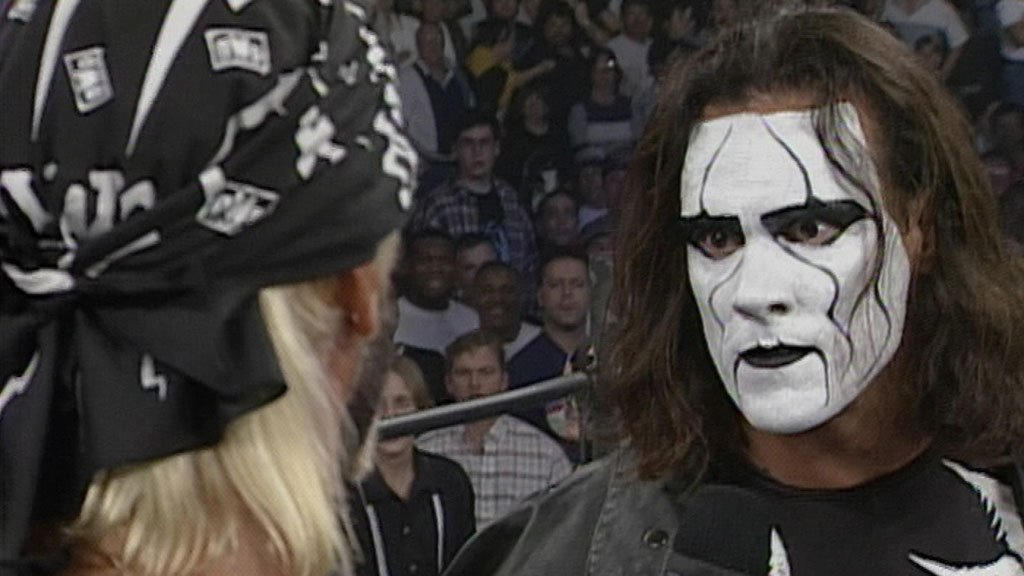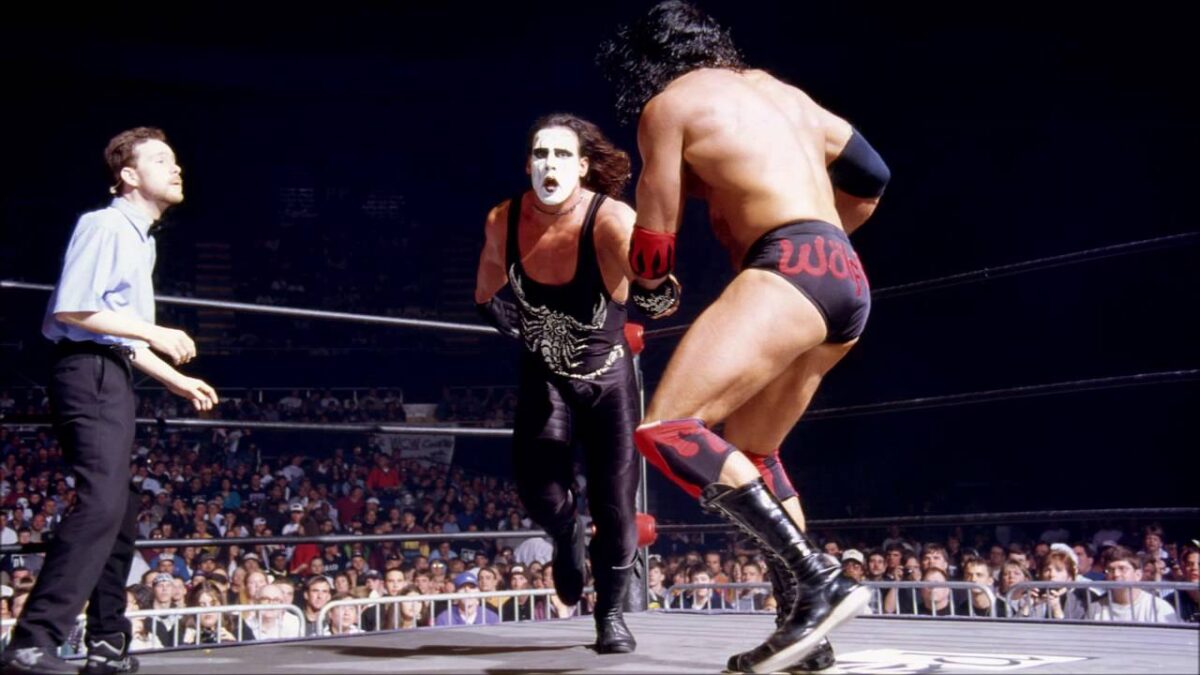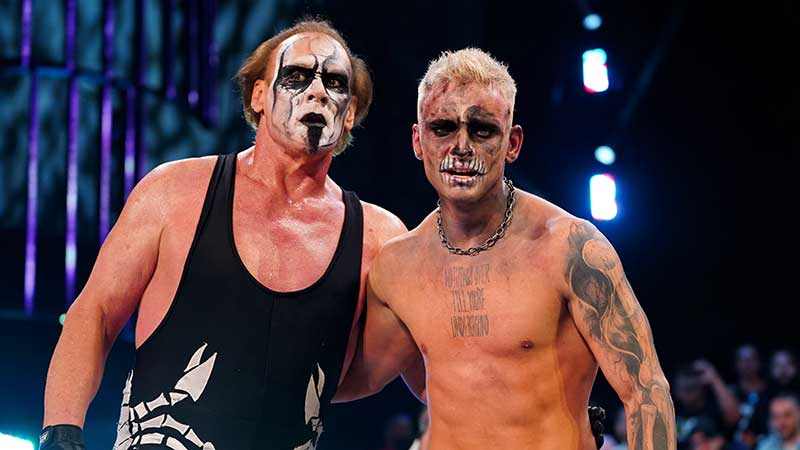Looking Back At Scott Hall’s Role In Developing The Crow Version Of Sting
One of the more interesting elements of the creative process in professional wrestling is just how collaborative it can be. There’s typically either one person in charge of the creative direction of a promotion, or else a booking committee that works together. From there, though, fans can sway the direction of a character or storyline based on their reactions, like the times the WWE audience all but forced Vince McMahon’s hand by getting behind Daniel Bryan in 2013 and 2014, or the groundswell of support behind Kofi Kingston in 2019.
A wrestler has input, too, as a gimmick will only be as successful as the wrestler executing it. Often as not, that work doesn’t come in a vacuum as a wrestler’s peers inevitably offer their opinions or the chemistry between different performers as partners or opponents can be far greater than the sum of the parts at hand.
One of the more remarkable instances of one talent redefining another’s career trajectory came when Scott Hall offered a new perspective on Sting’s identity.
What Was Sting’s Crow Gimmick?

For the first leg of his career in mainstream wrestling, fans got to know Surfer Sting. The early version of the character was known for bleach blond hair, brightly colored face paint, and neon tights to go along with a loud personality on the mic and in-ring offense that included high-flying and high impact moves like The Stinger Splash. A seismic shift happened in 1996, though, when the New World Order ushered in a new era for WCW, defined by more realism and an edgier product.
Sting was a key rival for the nWo, standing up against them in their first official match at Bash at the Beach, and a part of a four-man team representing WCW for War Games at that year’s Fall Brawl. The heels planted seeds that Sting had actually joined their ranks, causing The Stinger’s teammates—including Lex Luger and Ric Flair, who had each betrayed Sting in the past—not to trust him. Sting hadn’t actually joined the nWo, but resented the implication enough that he abandoned his teammates for not only that fateful War Games match, but over a year to follow.
Sting retreated to the rafters, dressed in black with white face paint, no longer working televised matches or cutting promos. The eerie persona was a major hit with fans, elevating Sting to a new echelon of super stardom before he’d finally clash with Hollywood Hogan at Starrcade 1997.
Scott Hall’s Input On The Crow Version Of Sting

On a recent episode of Eric Bischoff’s 83 Weeks podcast, centered on the formation of the nWo Wolfpac, he took a detour to discuss the development of Sting’s Crow persona. The former WCW executive credited the concept to Scott Hall.
Bischoff explained that Hall laid out the idea to Bischoff himself and gave him goosebumps for how creative and off the beaten path it was. From there, Bischoff described Sting listening to the pitch and appearing pensive and engaged all the way through, excited about the new direction.
Bischoff’s account was consistent with what Hall had said when he visited 83 Weeks for a guest spot in 2021. He also talked about giving Sting advice on his new persona, including that he advised him, “I’m not saying to rip off Taker, but rip off Taker.” The idea was for The Icon to borrow from some of the more serious and cryptic elements that had made The Undertaker’s supernatural character so successful over the years in WWE.
Crow Sting’s Legacy In Wrestling

Sting’s efforts prior to his big character shift in 1996 had already made him an all-time great babyface and surefire Hall of Fame talent. The Crow persona elevated him, though, not only at the time in WCW, but for his work to follow.
Sting conspicuously worked much of his TNA run in black and white gear. It’s little wonder that he showed up in WWE as a variation on the Crow character as well, with his first appearances seeing him stalk Triple H and The Authority not so dissimilarly from how he’d gone after Hollywood Hogan and the nWo. Sting has maintained that look for his AEW run alongside Darby Allin, too.
Indeed, while memories of Sting as a colorful wild man live on for longtime fans, the Crow version of the man has become his defining gimmick that the wrestling world remembers best.
Sting has been open that his retirement is looming, though he hasn’t yet announced specifically when it will happen. Regardless, the work he did under his Crow persona in particular made him an absolutely unforgettable legend, not to mention a rare performer to work a starring role in Jim Crockett Promotions, WCW, WWE, TNA, and AEW alike.